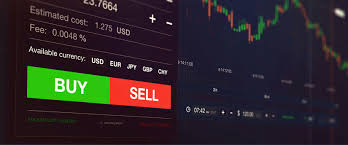
Forex Trading for Beginners: A Comprehensive Guide
Forex trading is an exciting and potentially lucrative venture for novices looking to delve into the world of currency markets. Whether you’re aiming to supplement your income or pursue trading as a full-time career, understanding the forex environment is vital. In this article, we will explore the fundamentals of forex trading, the mechanics behind it, various strategies to adopt, and common pitfalls to avoid. For more resources and information, feel free to check forex trading beginners https://trading-bd.com/.
1. What is Forex Trading?
The foreign exchange market, commonly referred to as forex, is a decentralized global marketplace for trading national currencies against one another. It is the largest and most liquid financial market in the world, with a daily trading volume exceeding $6 trillion. In forex trading, currencies are always traded in pairs, such as EUR/USD, where one currency is bought while the other is sold.
2. Understanding Currency Pairs
Currency pairs are categorized into three main types: major pairs, minor pairs, and exotic pairs. Major pairs consist of the most traded currencies and typically include the US dollar. Minor pairs include currencies that are less commonly traded, while exotic pairs combine a major currency with a currency from a developing nation. Understanding these categories will help you choose which pairs to trade.
3. How Does Forex Trading Work?
Forex trading allows you to speculate on the price movements of currencies. Traders use various tools and analysis methods to determine whether a currency will rise or fall in value. The primary objective is to buy low and sell high. When a trader believes that the value of a currency will increase, they enter a buy position; conversely, they enter a sell position if they believe the value will decrease.
4. Key Terms Every Beginner Should Know
Before diving into forex trading, it’s crucial to familiarize yourself with some key terminologies:
- Pip: The smallest price move that a given exchange rate can make based on market convention.
- Leverage: The ability to control a large position with a relatively small amount of capital.
- Spread: The difference between the bid and ask price of a currency pair.
- Margin: The amount of money required to open and maintain a leveraged position.
5. Setting Up a Forex Trading Account
To start trading, you’ll need to open a trading account with a reputable broker. Here’s a step-by-step guide:
- Choose a Broker: Research to find a broker that meets your trading needs, such as fee structures, available currency pairs, and platform usability.
- Create an Account: Fill out the required forms and provide necessary identification to verify your identity.
- Deposit Funds: Fund your trading account using a method convenient for you, such as bank transfer or credit card.
- Download Trading Platform: Most brokers provide access to trading platforms, where you can execute trades.

6. Choosing a Trading Strategy
Developing a solid trading strategy is crucial for success in forex trading. Here are some popular approaches:
- Day Trading: Involves buying and selling currencies within the same trading day.
- Swing Trading: Focuses on taking advantage of price swings in the market over a few days to weeks.
- Scalping: A short-term strategy that aims to capitalize on small price movements throughout the day.
7. Basic Tools for Forex Trading
To execute successful trading, you should leverage a range of tools:
- Trading Platforms: Software that allows you to analyze markets and execute trades.
- Charting Tools: Essential for technical analysis to identify market trends.
- Economic Calendars: Help keep track of economic events that can influence currency prices.
- Risk Management Tools: Help you manage exposure and safeguard your capital.
8. Understanding Risk Management
Risk management is a critical component of any trading strategy, especially in forex where leverage can magnify both profits and losses. It involves setting stop-loss orders, using proper position sizing, and ensuring that you only risk a small percentage of your trading capital on any single trade.
9. Common Mistakes Beginners Make
New traders often fall prey to several common mistakes, including:
- Lack of a Trading Plan: Trading without a clear strategy can lead to impulsive decisions.
- Over-leveraging: Using too much leverage can result in rapid losses.
- Ignoring Economic News: Not staying informed about economic events can lead to unexpected market movements.
- Emotional Trading: Making trades based on emotions rather than analysis can result in significant losses.
10. Continuous Learning and Adaptation
The forex market is constantly evolving, and it’s essential for traders to continue learning. Whether it’s through books, online courses, forums, or mentorship, continuously enhancing your knowledge and adapting to the changing market conditions will yield long-term success.
Conclusion
Forex trading can be a rewarding pursuit for beginners, but it requires a solid understanding of the market and effective strategies to navigate it successfully. By developing a disciplined approach, familiarizing yourself with trading mechanics, and applying risk management principles, you set yourself on the path to becoming a successful forex trader. Remember to continuously learn and adapt as you gain experience in this dynamic environment.


